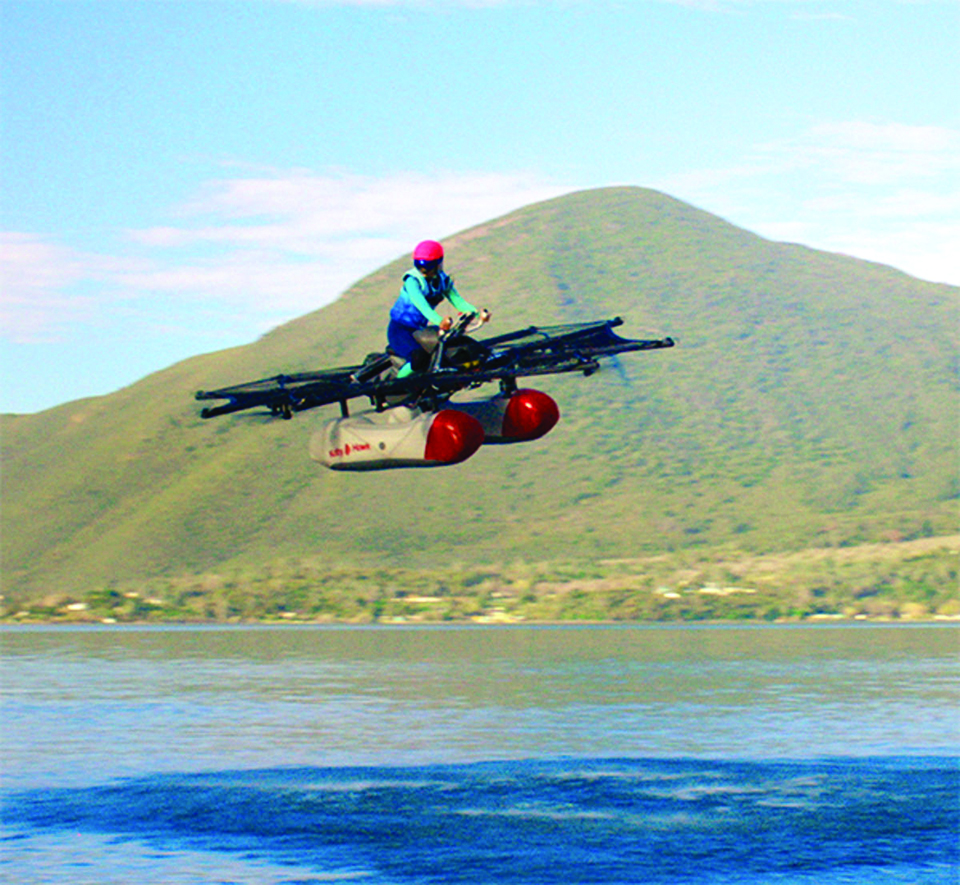A New Flying Personal Watercraft Makes Its Debut in Oshkosh
By Randy Dufault
July 26, 2017 - There is no shortage of online videos showing human-crewed multicopters in various stages of development and flight, with various states of apparent control. However, one developer is confident enough of the state of their project to fly it in front of an EAA AirVenture Oshkosh 2017 audience.
Kitty Hawk will demonstrate its prototype, Flyer — a name that is an obvious homage to the Wright brother’s first flight — at the EAA Seaplane Base today, Friday, and Saturday.
The Flyer is a single-person, electric-powered multicopter designed to operate over fresh water. It’s Part 103 compliant, so a pilot certificate is not required, and according to the company, the amount of training required is minimal.
When asked about the challenge of building an electric aircraft within the Part 103 weight limit, Kitty Hawk Director of Engineering Todd Reichart said, “This is an exciting opportunity to push the limits of battery-powered aviation. The motors can be made lighter than an equivalent gas-powered engine, but the batteries are certainly the biggest weight challenge.”
Todd, who has a Ph.D. in aerospace engineering, has substantial experience developing very light aircraft. He previously participated in the Atlas human-powered helicopter project and served as an engineer and pilot for the Snowbird human-powered ornithopter project.
Todd expects 15-20 minute flight times for the first Flyers. A full recharge should require two hours or less.
“Each year as batteries weigh less and last longer, we’re determined to make the Kitty Hawk Flyer fly longer — and faster,” he added.
A key goal for the Flyer is for pilots to operate it effectively, and safely, after only a short training period.
“Our goal is to make it easy to learn,” Todd said. “For example, the flight controls use thumbsticks just like an Xbox. The right thumb lets you tilt the Flyer in any direction, and the left controls the altitude and heading. We aimed for an experience that was as universal and familiar as possible.”
Regarding the initial plan to fly only over water, Todd said, “Water provides an environment with less obstacles, where mistakes are more forgiving.”
With eight motors, the design has enough built-in redundancy to recover from a failure. If one motors fails, the aircraft is still capable of maintaining attitude, and can still perform a landing.
Another Flyer safety feature is an auto land function. Advanced sensors and controls help users handle the more challenging elements of flying, such as station keeping and maintaining control in gusty conditions.
Kitty Hawk expects to have production versions available by the end of the year. Pricing is not set, although prospective buyers can purchase a membership that establishes a delivery position and offers a purchase discount.

